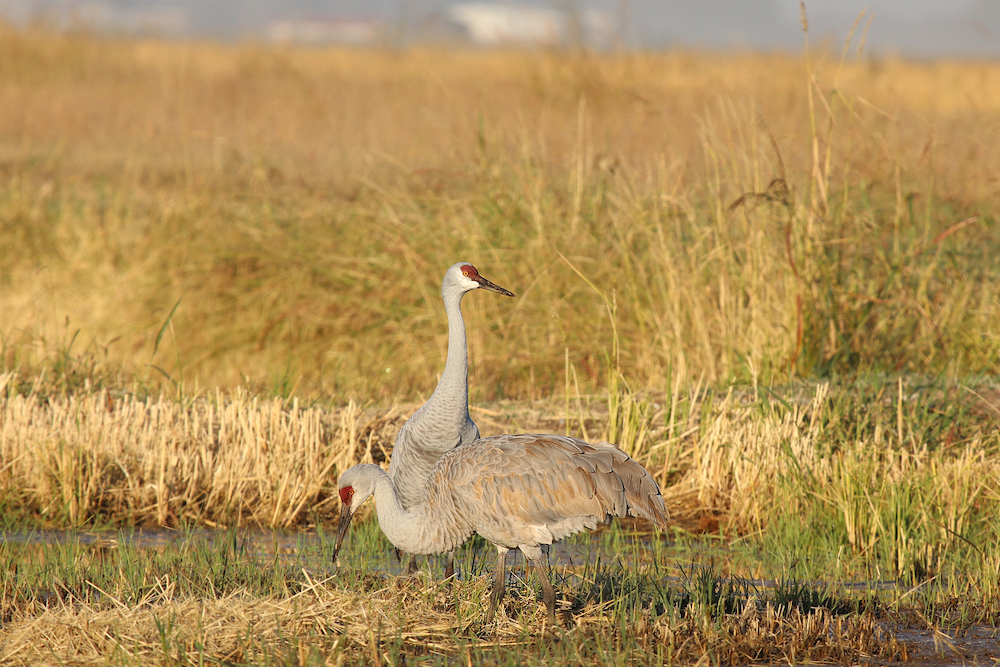Spectacular Sandhill Cranes
By Luke Matthews
Identification:
Sandhill Cranes are the only crane species that we see here in the Sacramento Valley. It’s not uncommon to see scores of cranes feeding and resting in rice fields throughout our region, especially in Butte and Glenn Counties. These unique birds are impressive, they stand four feet tall and have massive wingspans of almost seven feet. Adults are mostly gray in color, with long black legs, sturdy bills, white feathers on their checks and a bare patch of red skin around their eyes.

Fun Facts:
Many adults have brown or rust colored feathers in addition to the gray. This color is not a pigment in the feather, but a stain that come from the iron-rich soil of their summer ranges. Sandhills get this mud on their bills and it transfers to their feathers during preening.
Sandhills do not utilize trees. When they are not flying, these birds spend all of their time on the ground. In the winter months they roost in water and feed on dry land or shallow flooded habitat. In the summer they build their nests on the ground and raise their young near water.
Baby Sandhill Cranes are called Colts.

Sandhills mate for life. On the breeding grounds both sexes participate in nest building and they both feed their young until they are able to forage on their own. The young stay with their parents and migrate south to their wintering grounds in family groups.
Sandhill Cranes can be seen dancing and tossing rice straw in the air. These dances are most commonly associated with breeding behavior; however, you can see cranes of all ages and throughout any seasons engaging in these playful dances.
Greater Sandhill Cranes nest in California. While most Sandhill migrate far north to breed in Canada and Alaska. There is a population that breeds in North Eastern California, Oregon, and Nevada.
Sandhill Cranes are one of the oldest known bird species that is still alive today.
The California Central Valley hosts great numbers of Sandhills in the winter, but the largest concentration of these birds can be found in the Platte River Valley of Nebraska.
Luke Matthews is the Wildlife Programs Manager for the California Rice Commission






